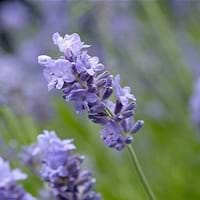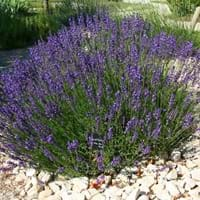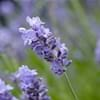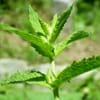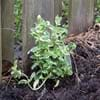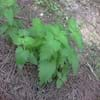Life Span
Perennial
Perennial
Origin
Western Europe, Mediterranean
Western Europe, Mediterranean
Types
Lodden Blue, Royal Velvet,Sachet,Sharon Roberts,Mitchem Gray
Melissa, Sachet
Number of Varieties
Not Available
Habitat
Rocky Mountains, Well Drained
Dry areas, Fields, meadows, Terrestrial
USDA Hardiness Zone
5-8
5-8
Sunset Zone
2a, 2b, 3a, 3b, 4, 5, 6, 7, 8, 9, 10, 11, 12, 13, 14, 15, 16, 17, 18, 19, 20, 21, 22, 23, 24
2a, 2b, 3a, 3b, 4, 5, 6, 7, 8, 9, 10, 11, 12, 13, 14, 15, 16, 17, 18, 19, 20, 21, 22, 23, 24
Habit
Clump-Forming
Clump-Forming
Flower Color
Purple, Lavender
White, Purple, Lavender, Blue Violet
Flower Color Modifier
Bicolor
Bicolor
Fruit Color
Sandy Brown
Sandy Brown
Leaf Color in Spring
Light Green, Gray Green
Light Green, Gray Green
Leaf Color in Summer
Light Green, Gray Green
Light Green, Gray Green
Leaf Color in Fall
Light Green, Gray Green
Light Green, Gray Green
Leaf Color in Winter
Light Green
Light Green
Leaf Shape
Pinnate
Small narrow short
Plant Season
Spring, Summer, Fall, Winter
Spring, Summer, Fall, Winter
Sunlight
Full Sun
Full Sun
Type of Soil
Loam, Sand
Loam, Sand
The pH of Soil
Neutral, Alkaline
Neutral, Alkaline
Soil Drainage
Well drained
Well drained
Bloom Time
Early Summer, Summer
Late Spring, Early Summer, Summer
Tolerances
Drought
Drought, Dry soil, Wet Site
Where to Plant?
Ground, Pot
Container, Ground, Pot
How to Plant?
Cuttings, Divison, Layering, Seedlings
Seedlings, Stem Planting
Plant Maintenance
Medium
Medium
Watering Requirements
Keep the Soil well drained, Needs less watering
Do Not over Water, Never Over-water, occasional watering once established, Water occasionally, Water when top layer of soil becomes dry
In Summer
Lots of watering
Ample Water
In Spring
Moderate
Less Watering
In Winter
Average Water
Less Watering
Soil pH
Neutral, Alkaline
Neutral, Alkaline
Soil Type
Loam, Sand
Loam, Sand
Soil Drainage Capacity
Well drained
Well drained
Sun Exposure
Full Sun
Full Sun
Pruning
Remove damaged leaves, Remove dead branches, Remove dead leaves
Prune in late summer or fall, Prune twice a year, Remove damaged leaves, Remove hanging branches
Fertilizers
All-Purpose Liquid Fertilizer
All-Purpose Liquid Fertilizer, Nitrogen, slow-release fertilizers, Water soluble fertilizers
Pests and Diseases
cuckoo spot, Gray mold, Red blotch
Beetles, Botrytis Blight, Phytophthora, Rhizoctonia crown rot
Plant Tolerance
Drought
Drought, Dry soil, Wet Site
Flower Petal Number
Single
Single
Fragrant Bark/Stem
Yes
Yes
Foliage Texture
Fine
Fine
Foliage Sheen
Matte
Matte
Attracts
Birds, Butterflies, Flying insects, pollinators
Insects
Allergy
Skin irritation, Vomiting
Avoid during Pregnancy
Aesthetic Uses
Beautification, Formal Garden, Hanging Basket, Landscape Designing, Showy Purposes, Used for decorating walls, fences, gates, hedges, etc.
Beautification, Landscape Designing, Showy Purposes
Beauty Benefits
Beautiful Skin, Good Cleanser, Improve skin tone, Moisturizing, Perfumes
Good for skin, Not Available
Environmental Uses
Air purification, Deer resistant, Food for birds
Air purification, Food for insects, Prevent Soil Erosion
Medicinal Uses
Antiseptic, Appetizer, Cholagogue, Diuretic, Sedative, Stomachic, Tonic
Antidepressant, Anxiety, Cancer, constipation, Cures constipation, Ear infections, Hair Loss, Itching, Lice, Menstrual Disorders, Migraines
Part of Plant Used
Flowers
Flowers, Leaves
Other Uses
Air freshner, Beneficial species for attracting pollinators, For making oil for cosmetics, Oil is used in perfume, soaps, creams, etc., Tea-like beverage can be brewed, Used as a condiment, Used as a flavouring in food
Cosmetics, Decoration Purposes, Employed in herbal medicine, Showy Purposes, Used as Ornamental plant, Used for its medicinal properties
Used As Indoor Plant
Sometimes
Yes
Used As Outdoor Plant
Yes
Yes
Garden Design
Dried Flower / Everlasting, Container, Cutflower, Edging, Herb / Vegetable, Mixed Border, Rock Garden / Wall
Container, Cutflower, Edging, Herb, Vegetable, Mixed Border, Rock Garden, Wall
Botanical Name
LAVANDULA angustifolia 'Munstead'
LAVANDULA angustifolia 'Vera'
Common Name
English Lavender, Munstead Lavender
English Lavender
In Hindi
Lavandula angustifolia
अंग्रेजी लैवेंडर
In German
Echter Lavendel
Englisch Lavendel
In French
Lavandula angustifolia
Lavande anglaise
In Spanish
Lavandula angustifolia
Inglés lavanda
In Greek
Lavandula angustifolia
Αγγλικά Λεβάντα
In Portuguese
Lavandula angustifolia
Inglês Lavender
In Polish
Lawenda wąskolistna
English Lavender
In Latin
Lavandyla angystifolia
anglicus Lavender
Phylum
Tracheophyta
Anthophyta
Class
Magnoliopsida
Dicotyledonae
Family
Lamiaceae
Lamiaceae
Genus
Lavandula
Lavandula
Clade
Angiosperms, Asterids, Eudicots
Angiosperms, Asterids, Eudicots
Tribe
Lavanduleae
Lavanduleae
Subfamily
Nepetoideae, Not Available
Nepetoideae
Season and Care of Munstead Lavender and English Lavender
Season and care of Munstead Lavender and English Lavender is important to know. While considering everything about Munstead Lavender and English Lavender Care, growing season is an essential factor. Munstead Lavender season is Spring, Summer, Fall and Winter and English Lavender season is Spring, Summer, Fall and Winter. The type of soil for Munstead Lavender is Loam, Sand and for English Lavender is Loam, Sand while the PH of soil for Munstead Lavender is Neutral, Alkaline and for English Lavender is Neutral, Alkaline.
Munstead Lavender and English Lavender Physical Information
Munstead Lavender and English Lavender physical information is very important for comparison. Munstead Lavender height is 30.50 cm and width 45.70 cm whereas English Lavender height is 30.00 cm and width 60.00 cm. The color specification of Munstead Lavender and English Lavender are as follows:
Munstead Lavender flower color: Purple and Lavender
Munstead Lavender leaf color: Light Green and Gray Green
English Lavender flower color: White, Purple, Lavender and Blue Violet
- English Lavender leaf color: Light Green and Gray Green
Care of Munstead Lavender and English Lavender
Care of Munstead Lavender and English Lavender include pruning, fertilizers, watering etc. Munstead Lavender pruning is done Remove damaged leaves, Remove dead branches and Remove dead leaves and English Lavender pruning is done Prune in late summer or fall, Prune twice a year, Remove damaged leaves and Remove hanging branches. In summer Munstead Lavender needs Lots of watering and in winter, it needs Average Water. Whereas, in summer English Lavender needs Ample Water and in winter, it needs Less Watering.
